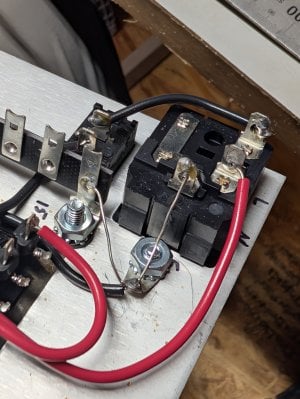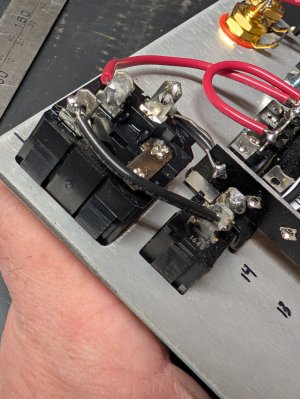edward1171
New member
In fact, it's somewhere between 0.003 and 1.7 depending on where on pins 7 and 9 I touch.
I'm at the first "plug it in and make sure you're good to go" stage where you just check for stepped down power at 7 and 9 on the transformer.
It looks like the plastic loop around the base of 9 isn't smooth. Possible heat damage?
Do these come messed up sometimes?
Me causing heat damage is totally a possibility.
I'm reading 120 everywhere else I should be, ground is good, wires are in the proper spots, solder makes solid connections, used two testers (Klein and fluke 15b) and got a friend to check it out just in case I'm missing something.
It's got to be something either in the transformer or with pins 7 or 9 coming out of them.
Can I get a new one?
Or am I overlooking something silly?
I can't upload on android or Mac OS so here's an imgur link
I'm at the first "plug it in and make sure you're good to go" stage where you just check for stepped down power at 7 and 9 on the transformer.
It looks like the plastic loop around the base of 9 isn't smooth. Possible heat damage?
Do these come messed up sometimes?
Me causing heat damage is totally a possibility.
I'm reading 120 everywhere else I should be, ground is good, wires are in the proper spots, solder makes solid connections, used two testers (Klein and fluke 15b) and got a friend to check it out just in case I'm missing something.
It's got to be something either in the transformer or with pins 7 or 9 coming out of them.
Can I get a new one?
Or am I overlooking something silly?
I can't upload on android or Mac OS so here's an imgur link
Last edited by a moderator:


